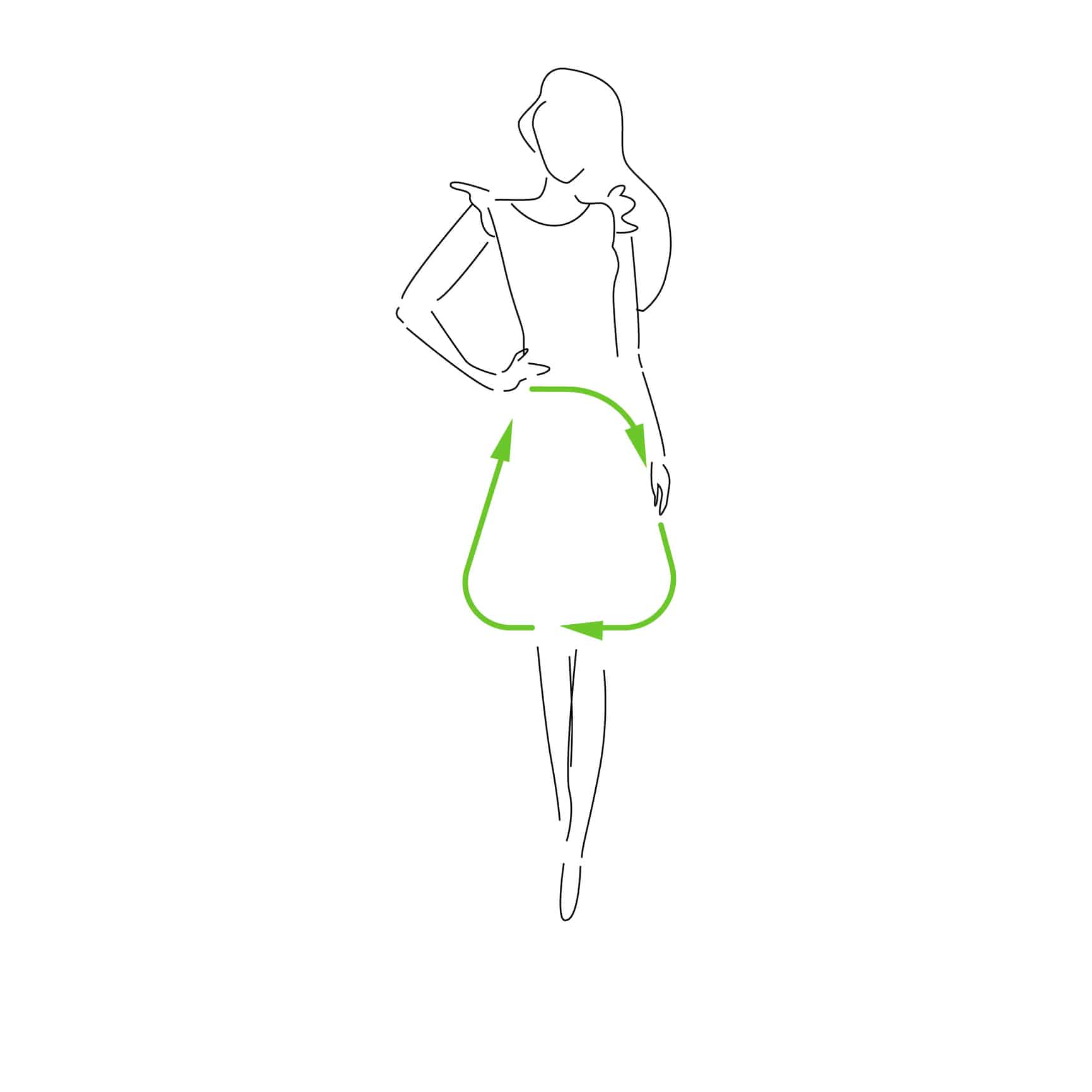Tweed is a fabric made of wool having intricate patterns and designs. It originated in Scotland back in the nineteenth century as informal outerwear used for hunting. Tweed has the property of being warm, rough and thick. Threads of different coloured wool are used to form intricate patterns of lines and squares. It is famous for use in suiting and jackets. It is a weather-resistant fabric as it is made of wool, and every tweed garment or article has a unique texture, thanks to its natural source, the wool fibre.
By choosing certain sheep breeds instead of others, you can somewhat control the pattern that will emerge in your tweed garment. Bunch-dyeing sets the iconic tweed patterns and mixed colours we all know. Its texture can be managed by selecting particular sheep for the wool fibre. The primary use of the tweed is outerwear apparel, but it is now fast getting adopted internationally as a fashion fabric.
Normally, the tweed fabric uses the twill weave design, resulting in diagonal stripes. Another widely used weave structure for tweed is the herringbone. Initially, the purpose of the tweed was to keep its wearer protected from harsh weather conditions prevalent in Scotland, Ireland, Wales and England.
In the nineteenth century, the sheepherders in Scotland made use of this fabric to save them from the cold winds of Scottish highlands. It soon grabbed the attention of the English upper class in a few years and entered into commercial production. With the Industrial Revolution’s advancement, the availability and cost of wool improved, and tweed became increasingly popular among ordinary people.
Australia is famous for its sheep and ranked as the largest wool-producing country, the raw material for tweed. At the same time, the fabric tweed is woven the most in England. In Ireland, tweed is produced mainly in county Donegal, and the Isle of Harris is the central hub of tweed production in Scotland.
Tweed originated from the Scottish word tweel used for twill fabric. There is an interesting tale behind this word, dating back to the nineteenth century. An English merchant received a letter from a Scottish tweed mill, Dangerfield Mills, about tweel fabric. The merchant mistakenly took it for tweed fabric. He assumed the name was based on the Tweed River flowing through the borders of the Scotland textile area. Hence the name tweed is still in use to date.

Tweed is made using wool originating from different natural coloured wool fibres. Being a natural fibre, there is always a shade variation in the wool that gives it a unique look. Further, it is also made of multiple colour dyed wool to make suits, jackets, overcoats and other outerwear. Nowadays, several other fibres are also used to make tweed, like silk, linen, viscose, etc.
Following are the main production steps involved.
A wide variety of tweed made today is mainly named after the sheep species, weaving techniques or designs. Hereunder are some popular types:
This type of tweed is a speciality of the Outer Hebrides or the Western Isles, off the coast of northern Scotland. It is patented to the Outer Hebrides, and all the production processes involved are carried out at the Isles by the locals.
This type comes from the Irish county called Donegal. It is commonly used and has a unique coloured design.
As the name suggests, it originated from Saxony, Germany. The source of the wool is merino sheep which gives a soft hand feel.
This tweed is named after the type of weave structure, like a fishbone. The design is also called broken twill.
It belongs to the Shetland Islands, situated off the coast of northern Scotland. It usually comes in lightweight having delicate designs.
Barleycorn tweed resembles the kernels of a barleycorn, when touched on the fabric surface.
The origin of this kind of tweed is the Cheviot Hills in Scotland. It is bulkier and heavier and gives a rough hand feel.

This fabric has been in outerwear use for a long time due to being warm and rough. But in current times, with its unique textures and designs, it offers fashion appeal too. It is also commonly used for suiting.
Jackets made of tweed have been one of the early uses of this fabric. Even today, tweed jackets are preferred for their long life and inherent property of warmth.
Suiting made of tweed fabric has been in fashion for a long time. The vintage look is one of the significant distinctions this fabric offers. Along with desired accessories, it is always a great choice to wear.
In accessories, the most popular items are hats and bags. Previously referred to farmers, the hats are now a fashion article worn for their unique look.
Apart from the above uses, tweed is also frequently used in military jackets, coats and pants.
The best characteristics of a tweed fabric is the life of the fabric, the strength it gets from its weave structure and its ability to withstand moisture. The advantage from the production point of view is that it can easily be sewn into garments. When combined with the special look the fabric has, these benefits make it a premium choice for many consumers.
The fabric needs a certain degree of care, as it is made of natural fibres. The wool is usually recommended to be dry cleaned. Dry cleaning is always the best option to keep the garment’s dimensional stability in check or avoid shrinkage. It depends on the fabric composition if it can be hand washed in lukewarm water. In the case of handwashing, the fabric has to be rubbed gently and must not be wrung hard. It should be left flat to dry naturally in sunlight as tumble drying is not suitable. Steam iron must be used for pressing.
Most importantly, the caring method recommended by the manufacturer of the tweed garment should be followed for a great long-lasting tweed experience.
| Cookie | Duration | Description |
|---|---|---|
| cookielawinfo-checbox-analytics | 11 months | This cookie is set by GDPR Cookie Consent plugin. The cookie is used to store the user consent for the cookies in the category "Analytics". |
| cookielawinfo-checbox-functional | 11 months | The cookie is set by GDPR cookie consent to record the user consent for the cookies in the category "Functional". |
| cookielawinfo-checbox-others | 11 months | This cookie is set by GDPR Cookie Consent plugin. The cookie is used to store the user consent for the cookies in the category "Other. |
| cookielawinfo-checkbox-necessary | 11 months | This cookie is set by GDPR Cookie Consent plugin. The cookies is used to store the user consent for the cookies in the category "Necessary". |
| cookielawinfo-checkbox-performance | 11 months | This cookie is set by GDPR Cookie Consent plugin. The cookie is used to store the user consent for the cookies in the category "Performance". |
| viewed_cookie_policy | 11 months | The cookie is set by the GDPR Cookie Consent plugin and is used to store whether or not user has consented to the use of cookies. It does not store any personal data. |
Create your free account and begin your sustainability journey.

